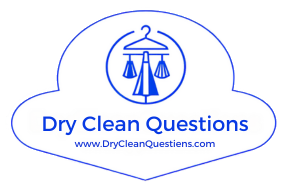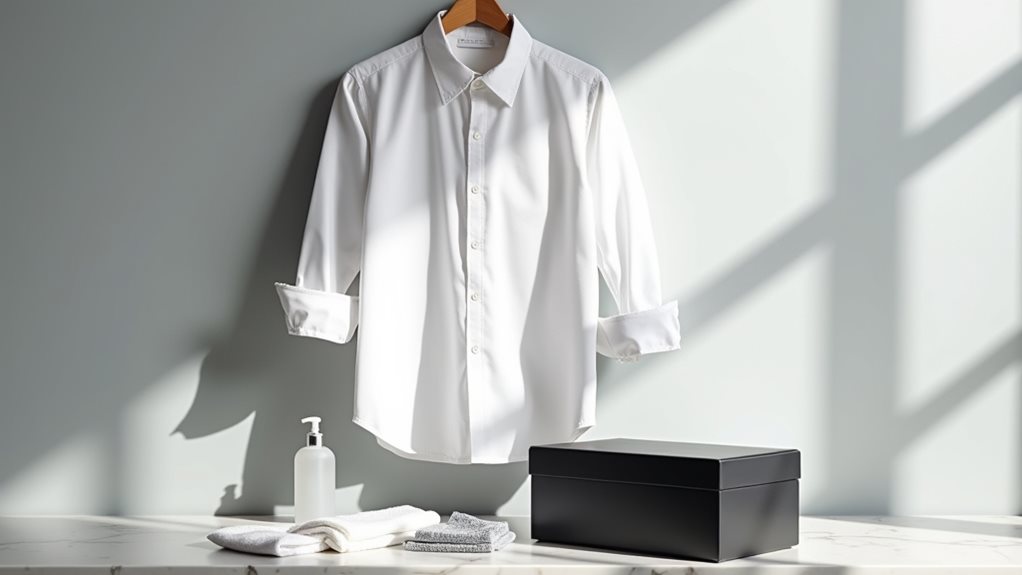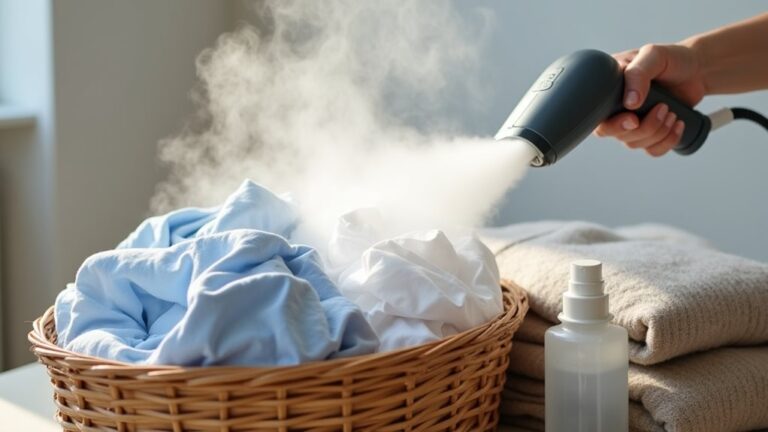Home dry cleaning kits work surprisingly well for freshening up your favorite wool sweaters and tackling those pesky water spots, though they’ll struggle with oil-based stains that need professional-grade solvents. You’ll love the convenience and cost savings—about 30 minutes in your dryer beats a trip to the cleaners—but don’t expect that crisp, pressed finish you’d get from the pros. They’re perfect for maintenance between professional cleanings, and there’s more to discover about maximizing their potential.
What Are Home Dry Cleaning Kits and How Do They Work
When I first discovered home dry cleaning kits tucked away in the laundry aisle, I’ll admit I was skeptical—could these little boxes really replace my expensive trips to the professional cleaners?
These kits contain everything you need: stain remover solutions for tackling those pesky water-based marks, absorbent pads for blotting spills, dryer sheets for rejuvenation, and special reusable bags.
Here’s how they work: you treat any light stains first, then place your garments in the provided bag with a damp towelette. The magic happens when you toss everything in your dryer—the steam generated helps remove odors and wrinkles from delicate fabrics.
While they won’t give you that crisp, professionally pressed finish, they’re surprisingly effective for cleaning and revitalizing clothes between visits. These kits work particularly well on garments with “dry clean only” labels that need occasional maintenance rather than intensive deep cleaning.
Effectiveness of Home Dry Cleaning Kits on Different Types of Stains
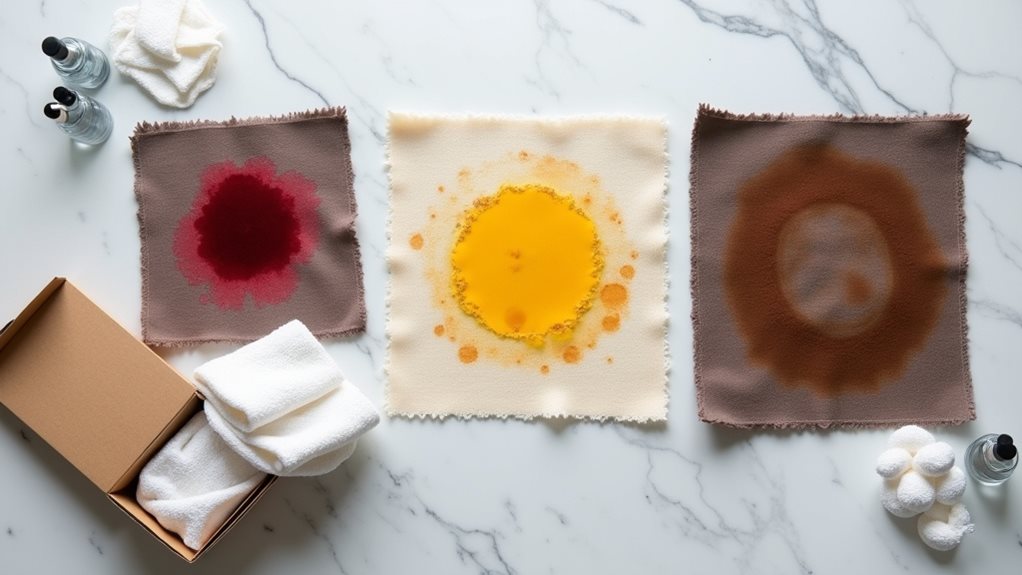
Three different types of stains taught me everything I needed to know about home dry cleaning kits, and honestly, the results surprised me in both directions.
When I tested light stains like water spots on delicate fabrics, the effectiveness was genuinely impressive—especially after spot cleaning with the included stain remover first.
However, oil-based stains? That’s where these kits meet their match, requiring professional cleaning instead.
What fascinated me most was how the kits prioritized odor neutralization over deep cleaning, making garments smell fresh even when stubborn marks remained.
You’ll find home dry cleaning kits work beautifully for maintaining “dry clean only” items between professional visits, but don’t expect miracles on serious stains.
Professional dry cleaning uses chemical solvents instead of water, which explains why it’s far more effective at removing the tough, oil-based stains that home kits struggle with.
Pros and Cons of Using Home Dry Cleaning Kits
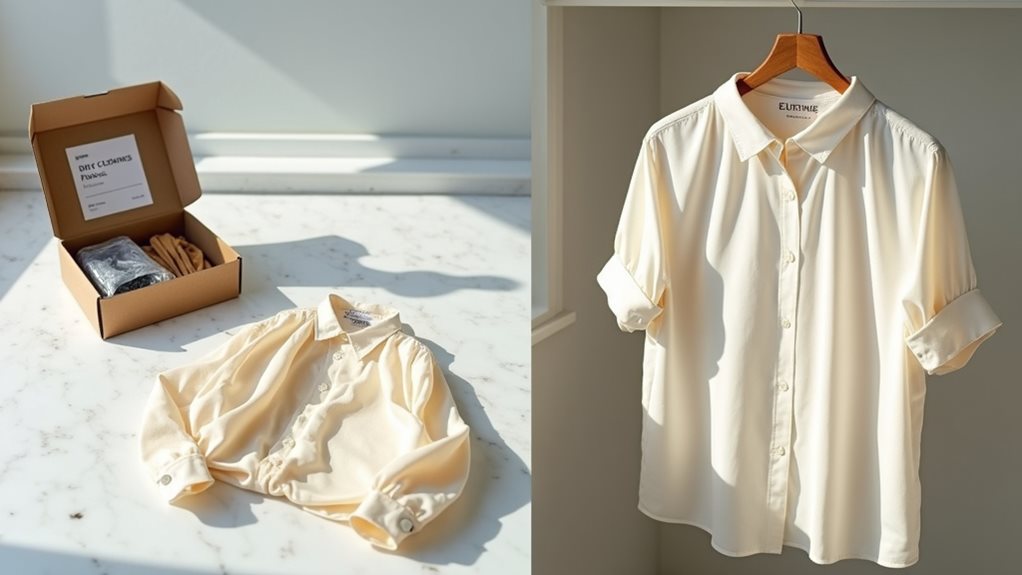
After testing these kits extensively on my own wardrobe disasters, I’ve developed a pretty balanced perspective on their strengths and weaknesses—and trust me, there are compelling arguments on both sides.
Home dry cleaning kits shine when you’re freshening up delicate garments or tackling light stains without breaking the bank—they’re considerably less expensive than professional services. You’ll love the convenience of treating your fabrics at home in just 30 minutes.
However, proceed with caution since some kits contain harsh chemicals that aren’t suitable for all materials. They’re effective for odor removal but won’t give your customized pieces that crisp, pressed look, and forget about using them on leather or heavily embellished items. While these kits work well for maintenance cleaning between professional treatments, they struggle with oil-based stains and heavily soiled garments that require specialized care.
Step-by-Step Guide to Using Home Dry Cleaning Kits
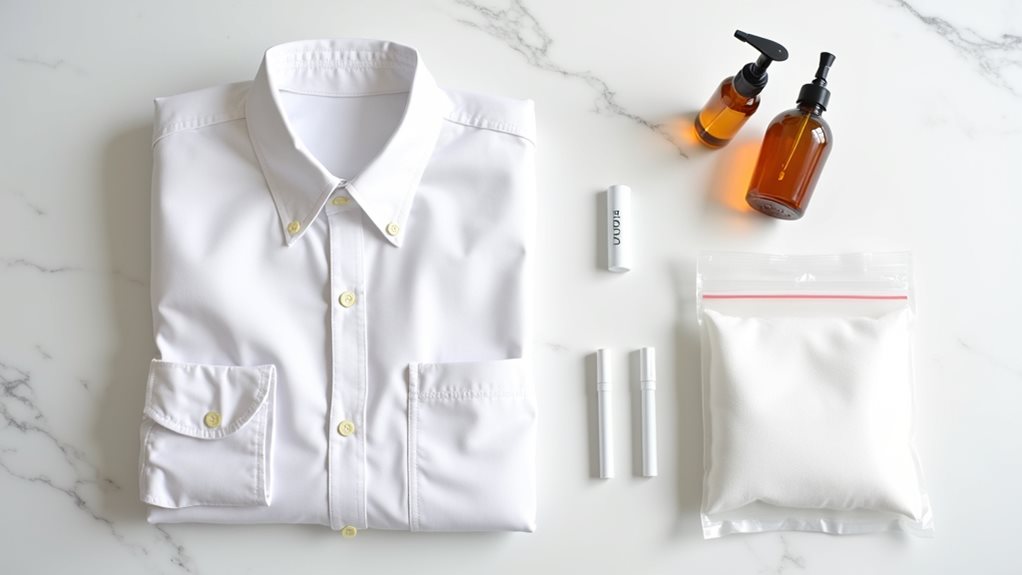
Getting the most from your home dry cleaning kit requires following five essential steps that I’ve refined through countless loads—and yes, a few embarrassing mishaps that taught me what not to do.
First, spot-treating stains with the included solution prevents them from setting permanently during the cycle.
Next, group similar fabric weights together in the dryer bag to prevent color bleeding and minimize wrinkles.
Set your dryer to medium to high heat for thirty minutes, adding the damp towelette for steam.
Follow the instructions carefully—I learned this the hard way when I ruined a silk blouse!
Remove garments immediately when finished and air dry them properly.
Always test the cleaning method on an inconspicuous area first to ensure the fabric won’t be damaged by the process.
This method helps clean delicate fabrics effectively while maintaining their quality and appearance.
Which Garments Are Suitable for Home Dry Cleaning Kits

While I’ve tested home dry cleaning kits on everything from my favorite cashmere sweater to my daughter’s stuffed elephant (don’t ask 😅), I’ve learned that success really depends on choosing the right garments for the job.
Home dry cleaning kits work beautifully on delicate garments like wool blouses, softly-tailored pieces, and items with embellishments that need gentle care. They’re perfect for lightly soiled clothes or tackling water-based stains, but don’t expect miracles on heavily stained items. The cleaning fluid simply isn’t strong enough for serious soil.
Garments suitable for home dry cleaning include your everyday sweaters, jeans, and even household items like curtains, as long as they fit comfortably in your dryer and aren’t made from leather or suede. Always check garment care labels first before attempting any home cleaning method to ensure you’re using the safest approach for your specific item.
